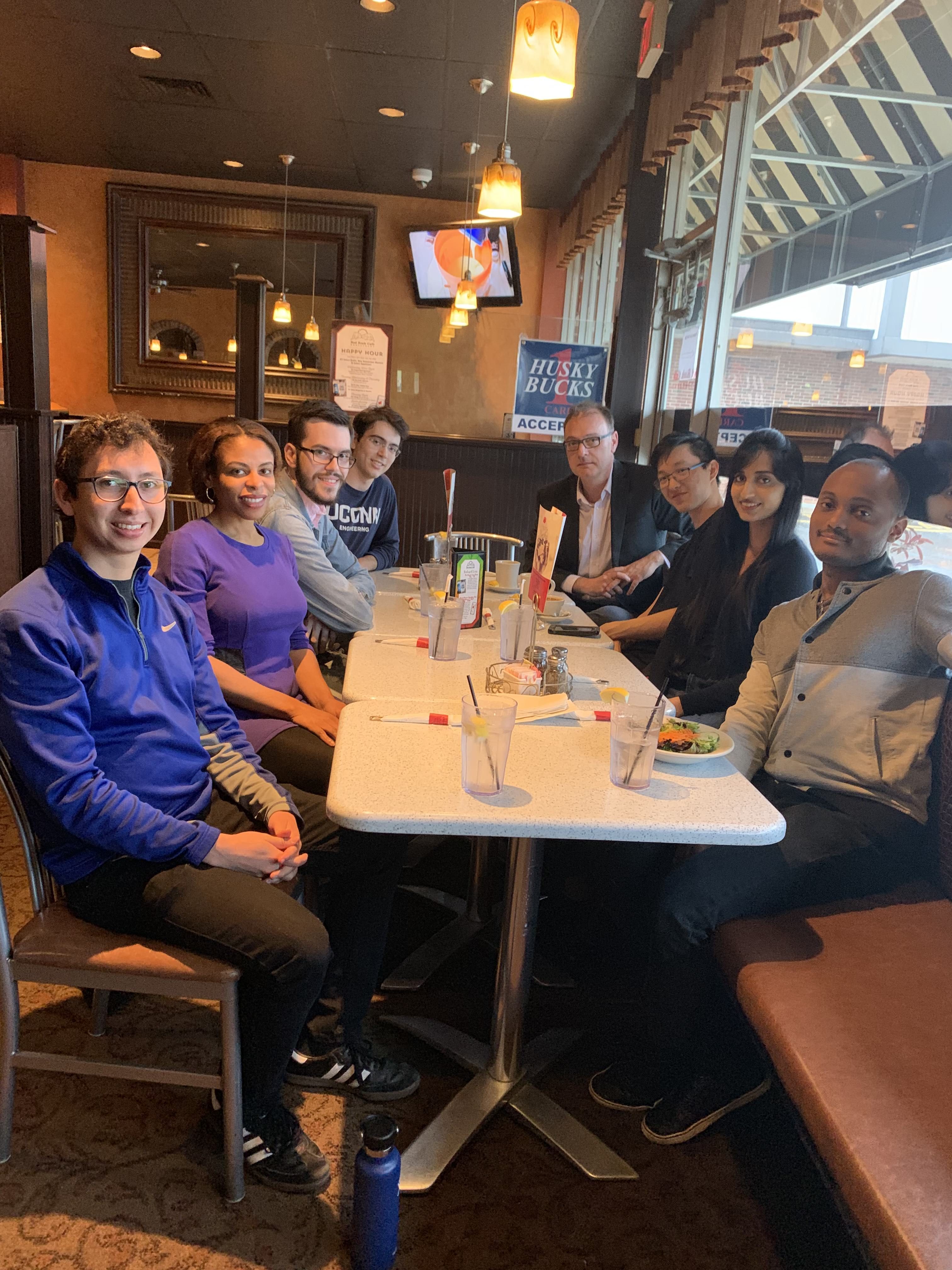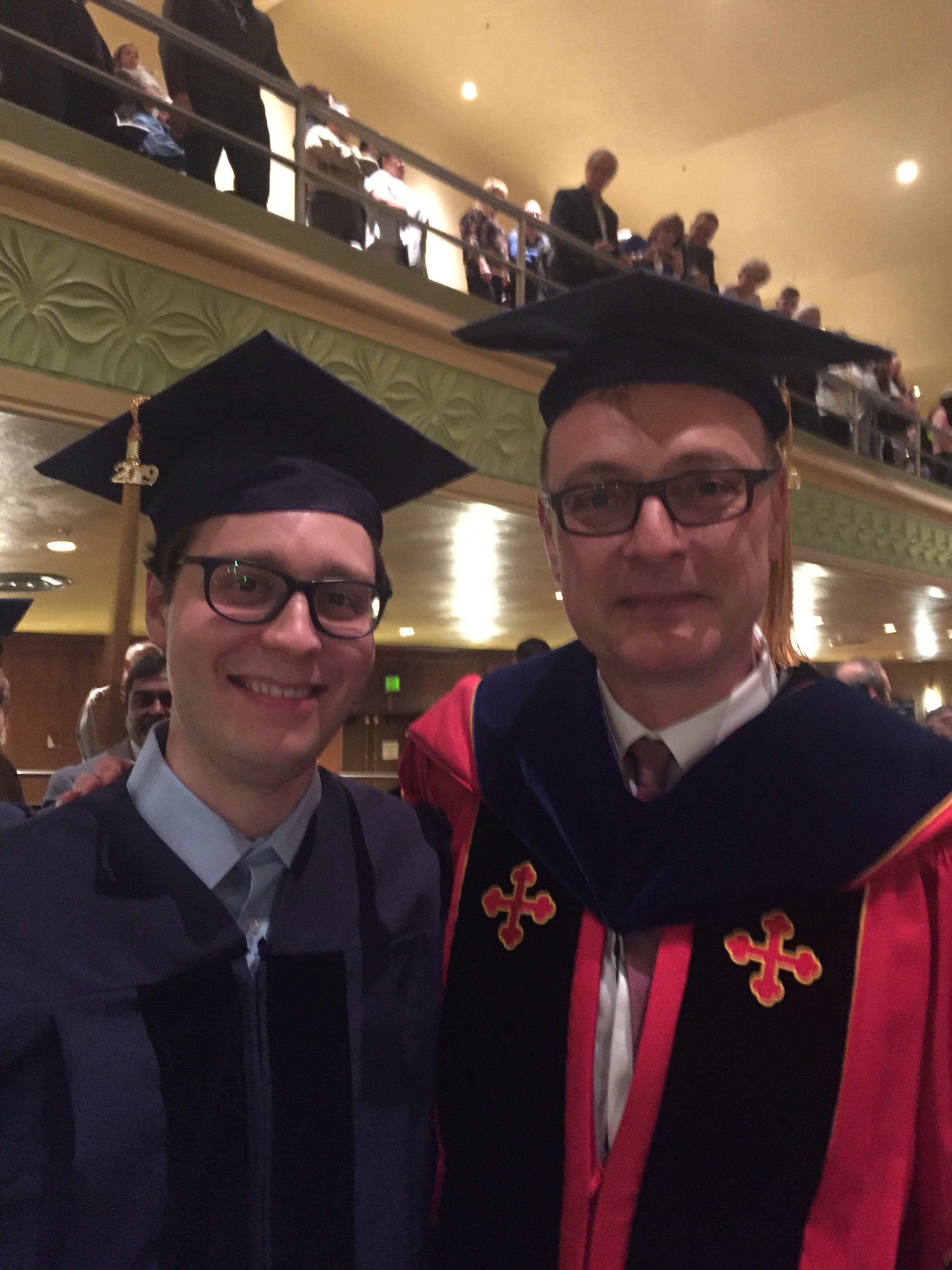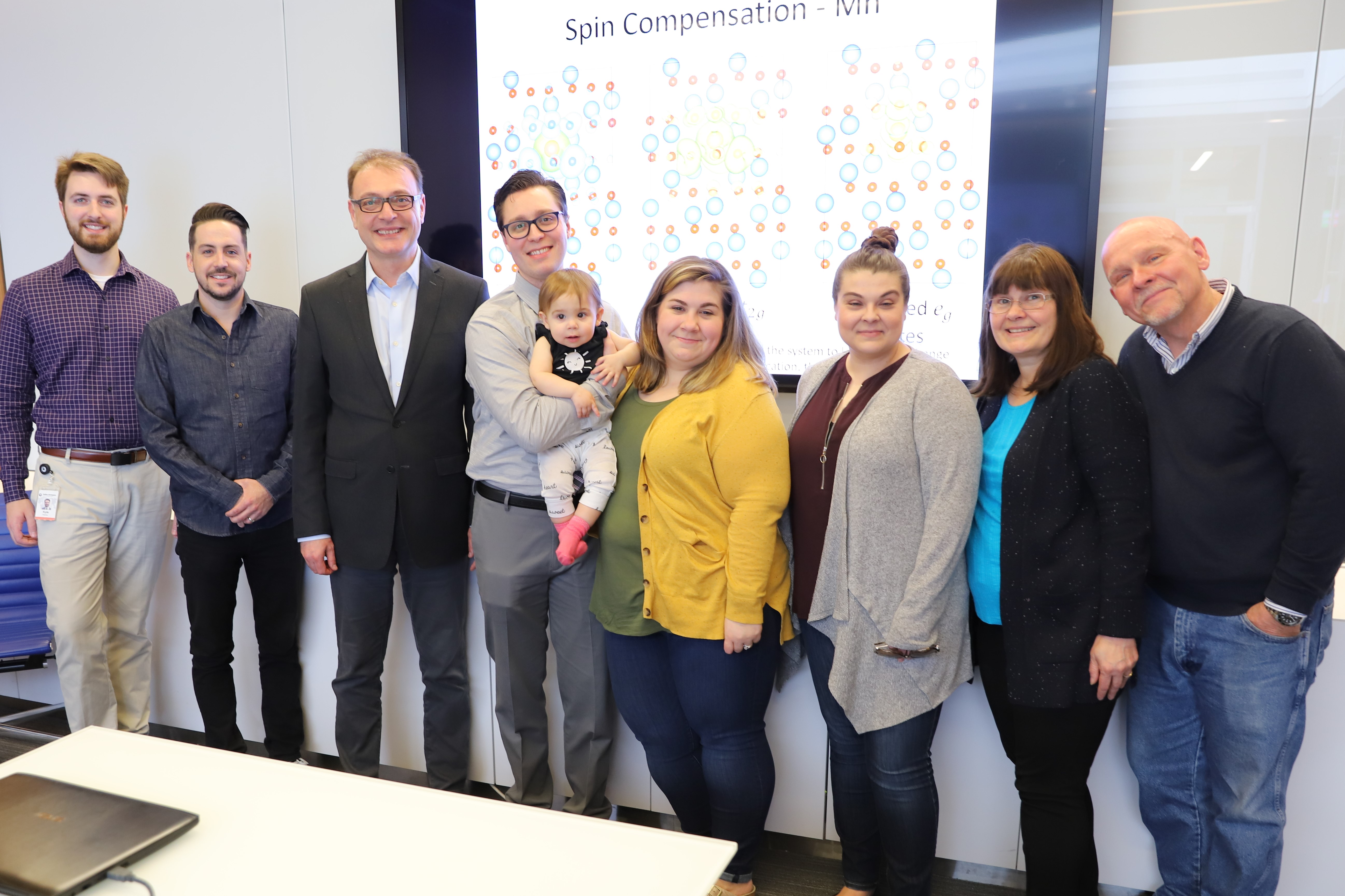What better way to end the semester, but in the company of friends and celebrating a birthday. Happy birthday Dennis!
It’s Graduation Season!!
Congratulations Dennis & Uche for Receiving MLSE Travel Awards
Erik Defended His Dissertation
Cassidy Will Intern At The Army Research Lab
Cassidy will study the interface of silicon carbide and diamond composites. She will explore different types of grain boundaries and investigate how adding different atoms affect the strength of the composite.
Trujillo Will Intern This Summer At The Army Research Lab
Dennis will use first-principles and machine learning methods to develop relationships between the electronic properties and strength in silicon carbide-based armor.
Dr. Alpay gave an invited talk at the Army Research Lab
The presentation was titled ‘Design using Atomistic and Mesoscale Models’.
Our research group was awarded a $5.4 million R&D contract by the AFRL
Alpay’s research group, in collaboration with Hebert’s research group and other researchers, will work to provide the next generation manufacturing solutions for the aerospace sector. The project, titled “Simulation-Based Uncertainty Quantification of Manufacturing Technologies,” will help the U.S. Air Force develop more efficient manufacturing processes. The goal is to understand each and every step of the manufacturing process to eliminate failures in specialized aerospace parts. Better understanding the manufacturing process will lead to reduced costs, improved component and system quality, and enhanced industrial capability.
https://today.uconn.edu/2019/03/uconn-receives-major-contract-air-force-rd-advanced-manufacturing/
Dr. Alpay gave an invited talk at Worchester Polytechnic Institute
https://www.wpi.edu/news/calendar/events/mte-seminar-computational-materials-design-electrocaloric-materials-waste-heat




